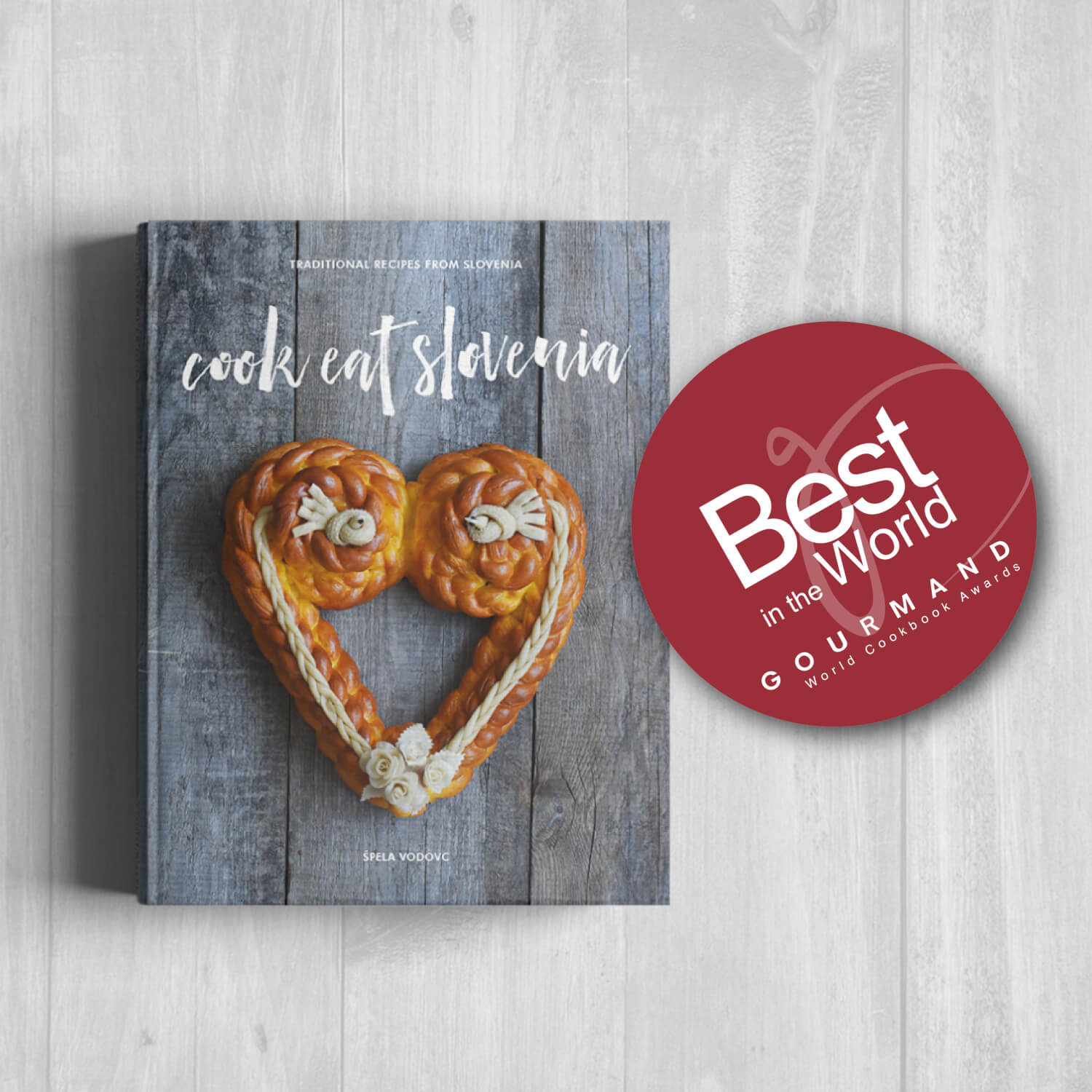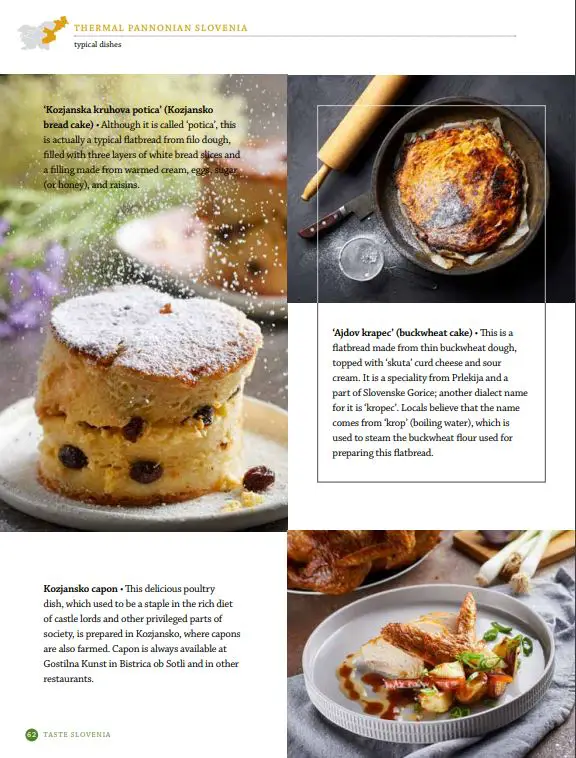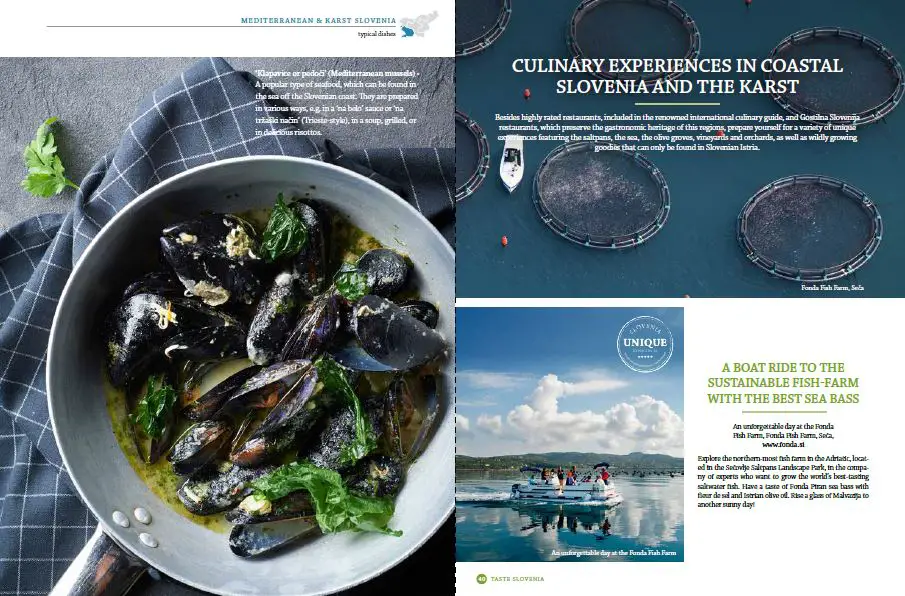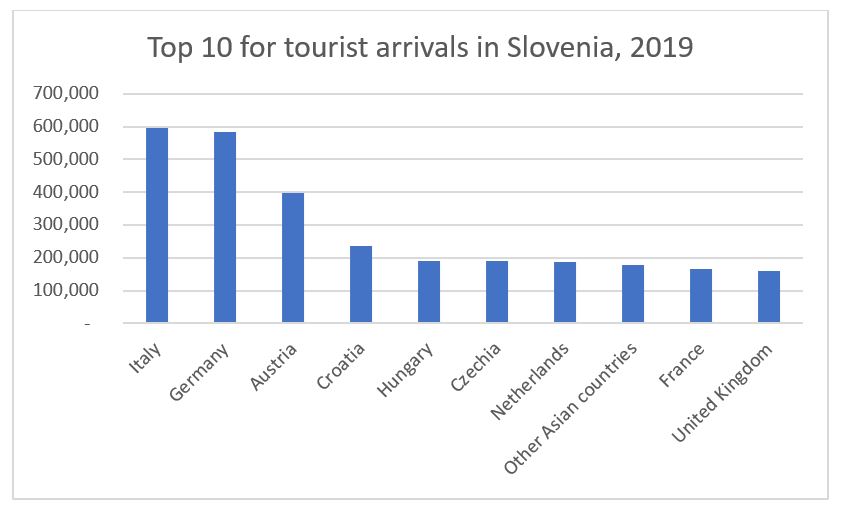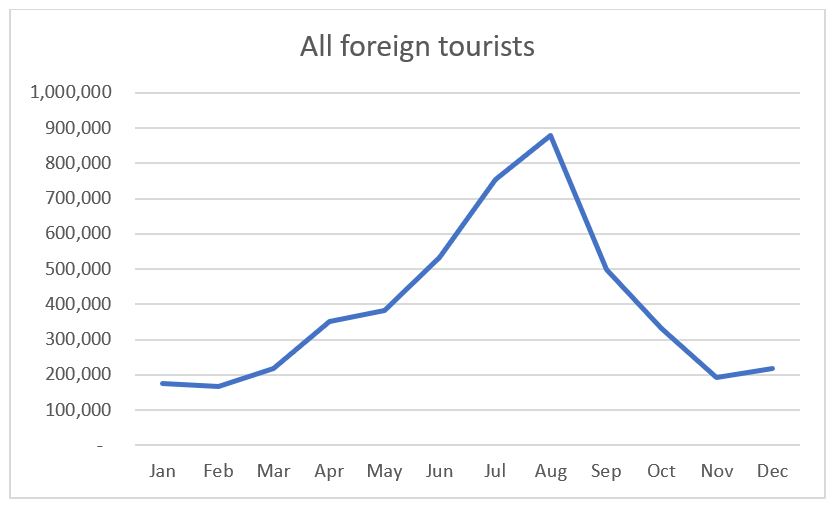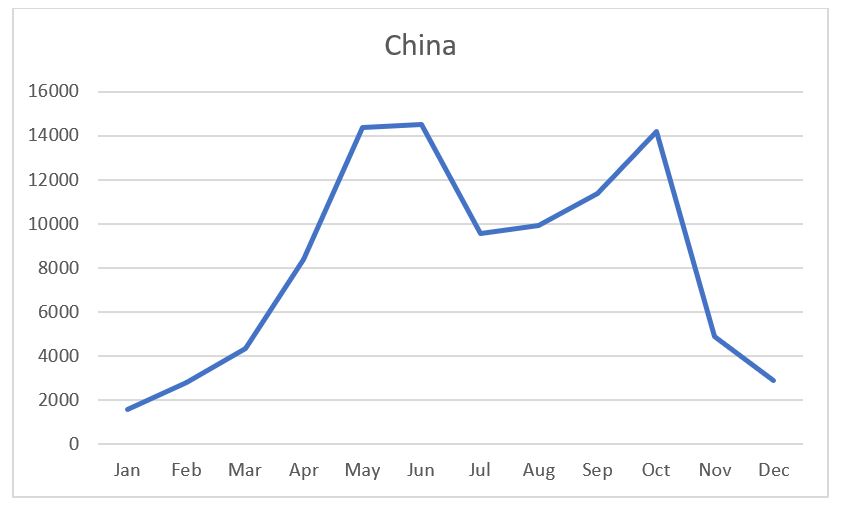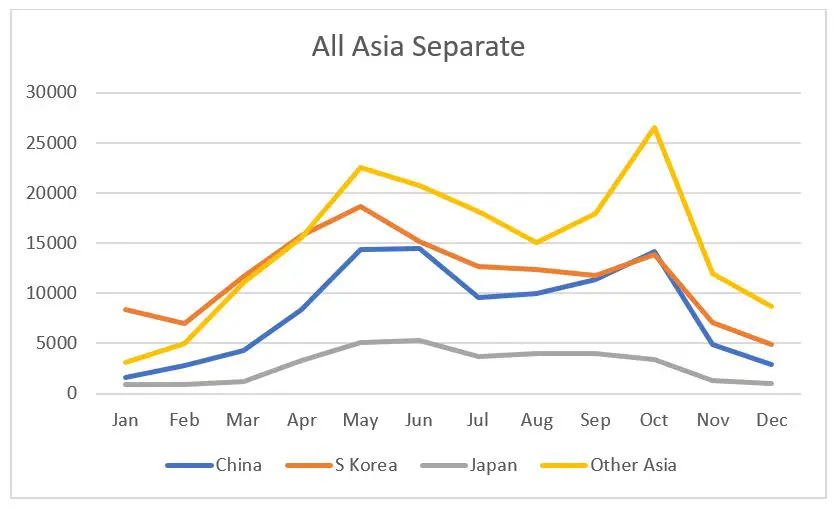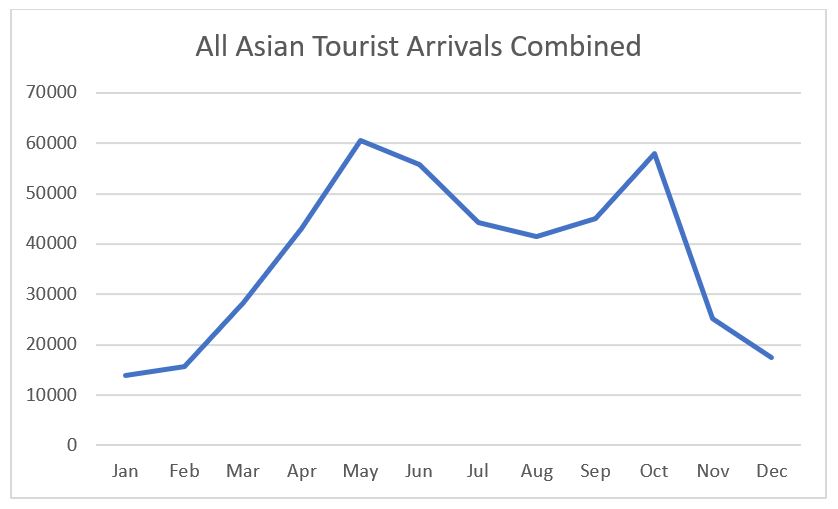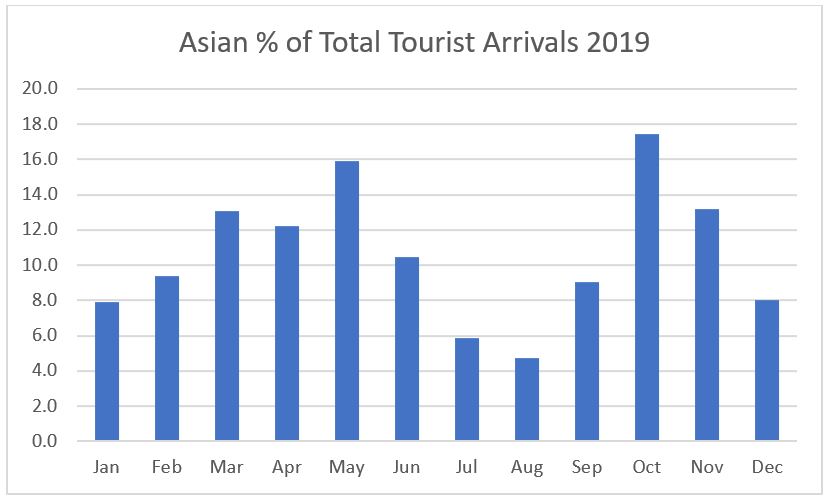Ljubljana related
The €200 tourist vouchers that every permanent adult resident in Slovenia is set to receive, along with €50 for every child, can be transferred to relatives if wanted. The law allows tourist vouchers to be transferred between the beneficiary's second degree relatives in a straight line. This includes transfers between parents and children, grandparents and children, between spouses or partners and between children and their legal guardians. Vouchers can’t be transmitted between brothers and sisters, cousins, friends etc.
The Financial Administration (FURS) has prepared instructions on how to use the transferred vouchers. In the process of transfer, the original holder of the voucher needs to fill out and sign a statement in which they give their voucher to their relative to use. The statement then needs to be presented to the hotel receptionist along with a valid ID of the guest, and not sent to FURS or any of its offices.
STA, 7 May 2020 - Details are emerging of a package of state aid the Slovenian tourism sector will get to survive what is expected to be a deep slump. Aside from an extension of existing measures that all companies are eligible for, tourism companies will get an extra loan facility and a short-time work scheme.
A short-term work scheme, best known by its German name Kurzarbeit (Wikipedia), will be put in place as part of the third stimulus package, Economy Minister Zdravko Počivalšek told the press on Thursday.
Existing schemes such as state financing of temporary layoffs, which expire at the end of May, will be extended for tourism companies by between four and eight months to facilitate a gradual reopening of the sector.
A lending facility providing liquidity loans of EUR 5,000-40,000 for small and medium-sized companies will be put in place and grants of EUR 16 million total will be available to cover the running costs of restaurants and accommodation services.
"The state will help tourism because it is an industry hit by coronavirus in the most drastic way," said Počivalšek, adding that the industry needed "measures that will facilitate not just survival but also restructuring and the development of new products."
"We want to preserve jobs in tourism, retain high-quality staff and help smaller providers survive," he said. The situation is expected to improve next year, but Počivalšek stressed that some estimate tourism may need up to five years to recover.
While outdoor areas of bars reopened this week and restaurants have been serving take-away food for several weeks now, the bulk of the hospitality sector remains shut down as hotels, spas, campsites and tour operators await the government's decision to reopen.
A document circulated on social media in recent days suggested accommodation providers with up to 30 beds could reopen on 12 May along with restaurants, bars and campsites, followed by tour operators, larger hotels, wellness centres and pools on 1 June.
Počivalšek said these dates were merely indicative. "They still need to be examined. Some are more likely, others less so."
Another major unknown are instructions for precautionary measures that providers will have to follow. Počivalšek said they were being finalised and would be presented shortly.
All our stories on coronavirus and Slovenia are here
STA, 4 May 2020 - With the tourism industry projected to remain shut down longer due to coronavirus than most other sectors, the Slovenian government is considering extending temporary emergency aid for tourism companies by a few months or even until the end of the year, Economy Minister Zdravko Počivalšek said on Monday.
"Tourism experienced the impact of the coronavirus crisis first and, partially due to the reliance on foreign guests, it will not be able to restart its operations until later," Počivalšek said before a newly established council for tourism, a government advisory body, convened to discuss the need for additional aid and health standards.
Specifically, the state financing of temporary layoffs, which expires at the end of May, could be extended by four months or even until the end of the year for the tourism business. Počivalšek said he would formally propose that to the government.
It would also make sense to set up a fund that would extend grants and favourable loans for the financing of current operations and investments since the industry needs to adjust to new standards.
While the current epidemiological situation is favourable and represents "an optimistic basis," Počivalšek noted that revenue in tourism was expected to contract anywhere between 25% and over 70% this year depending on the pace of the easing of measures.
Bar terraces opened today and restaurants have been allowed to serve food for take away and delivery for several weeks now. Počivalšek said "more significant steps" might follow in the second half of May or in June, for example the opening of small accommodation facilities.
Slovenia has also been in talks with Croatia on reopening the border for tourism. Počivalšek said the heads of both public health institutes would discuss protocols for border crossing this week.
The minister however warned that tourism would change permanently as a greater emphasis is placed on health. "I am confident that the tourism business and we as the competent ministry know which direction the measures should take so that we remain at the vanguard in this field."
Počivalšek noted that Slovenian tourism had already built its business model on niche experiences and active holidays, which he said would remain its foundation in the future.
The director of the National Institute of Public Health, Milan Krek, said after the session that an expert group would meet this week "to make sure that once the green light for opening is given, innkeepers, hotel owners and other workers in tourism are ready."
Gregor Jamnik, the head of the Slovenian Association of Hotels, said liquidity was essential now for hotel operators since the industry would take longer to recover and since the likely ongoing presence of the virus would require "an unprecedented change of conduct in hotels, bars and restaurants".
Podčetrtek Mayor Peter Misja, the head of the Slovenian Tourism Association, added that the standards that will be put in place should be workable. "Slovenia should not be more papal than the pope."
In this short (we hope) series before things re-open, we’re looking at what things local tourist offices want to promote for their town or region, starting with the capital. If you’re a tourist office and would like a similar, free-of-charge story for your area, please get in touch me with me at This email address is being protected from spambots. You need JavaScript enabled to view it., subject Virtual Tourism + PLACE NAME, and let me know why people should be planning a visit, plus links to anything you want to promote.
People can’t travel now, but they can daydream and plan, so we got in touch with Nina Kosin at Ljubljana Tourism to find out what she’d recommend. She wanted to highlight four broad areas of what Ljubljana offers visitors and residents – a green, active city, vibrant culinary scene, wealth of museums and galleries to explore, and tours and trips to take within the city or nearby. There's a lot of videos, so relax, let them load and start planning your next trip Slovenia.
A green and active city
In 2016 Ljubljana won the title of European Green Capital, a fact that will come as no surprise to anyone who knows the city, with its trees and parks, large pedestrianised area, good public transport, clean flowing river and many, many cyclists. This year the city is tying this clean, green and active image even more closely to its tourist offer, with a clear focus on active holidays.
Cycling in Ljubljana
If you want to on a bike to explore the city like a local then you can easily rent one from the Biciklj system or the tourist centre – with four hours free if you have a Ljubljana Tourist Card – which also offers entrance to city and national museums and galleries, free public transport, a boat ride, trip to the castle, wi-fi and more.
By bike you can follow a one of several thematic routes through the city, take a tour or just explore your interests – with the Castle and river as easy reference points to find you way so you’re in no danger of getting lost.
If you prefer to cycle away from the streets, then Ljubljana Bike Park and the hill known as Golovec offer mountain bike trails to bounce along, while there are also pump tracks in the Spodnja Šiška, Bežigrad and Fužine districts. In short, if you’re looking for a city break that’s good on two wheels then consider Ljubljana – and if you want to see more of the country, then take a look at the Bike Slovenia Green tours that can take you from the mountains of Kranjska Gora to the coast of Koper.
Hiking in Ljubljana
Of course, not everyone feels comfortable on two wheels, so it’s good that Ljubljana is small enough to enjoy on foot, with many paths to hike or jog along through nature if you want to get more exercise and pump more of the city’s fresh air into your lungs. Simply head to Castle Hill or Tivoli Park and then up to Rožnik Hill for a commanding views the city in a forest. These two forested areas are quickly reached from the centre of town, and throughout the year offer residents and visitors a green escape into the wonders of nature.
Running in the city is fun, with lanes and bridges, hills and forests
Further from the centre there’s the more extensive Šmarna gora, while if you’d like to get out of the city then there are numerous hiking trails nearby with different levels of difficulty and landscapes to enjoy – the official details are here.
If mobility is an issue, then don’t worry – Ljubljana is an increasingly accessible city with ramps and facilities for people with disabilities, as well as a free electric vehicle (an electric kavilir) to move you around. A great app called Ljubljana by Wheelchair also highlights cafés, attractions and so on with ramps, disabled bathrooms and Eurokey facilities, which you can read about and download here. Manual wheelchair users can also borrow, for free, an attachment that will motorise their equipment, as reported here.
Food and drink in Ljubljana
With all that movement you’ll be hungry, and when Ljubljana reopens there should be plenty to eat, which is why Nina Kosin of Ljubljana Tourism recommends adding the city’s culinary scene to the reasons you’ll be making a visit.
Slovenian cuisine has been on a steep rise the last few years, with Ana Roš, food & wine tourism, farmers markets, and festivals building on each other to spread the word and create the networks needed to connect producers with consumers.
If you want to cook Slovenian food, then I recommend taking a look at the Cook Eat Slovenia book – beautiful produced, with clear recipes that cover all seasons and regions. Here’s the recipe for potica.
Gault & Millau published their first guide to a Slovenia in 1998, Michelin’s book is set to be released late 2020, and Ljubljana Tourism have put together their own list of restaurants with the “Ljubljana Quality Mark”, along with some recommended places to sample traditional Ljubljana dishes, artisanal products, and even international food (details here).
Whatever your budget, you’ll want to check out are the excellent central market, where you can pick up everything you need for a picnic from local farmers and producers – and perhaps find yourself shopping next to a top chef or two. If in town on a Friday in the warmer months then a must visit is Open Kitchen, which from 11am till late has stalls selling food and drink from some of the best restaurants in the city, and certainly has the most variety in one place.
Museums, galleries and performances in Ljubljana
OK, that’s movement and food, now to consider art and culture, with Ljubljana’s museums and galleries offering very manageable collections of artworks and artifacts from around the country and all over the world. Whether you prefer natural history or contemporary art, ceramics or science and technology, puppets or Roman remains, the city has more than enough variety to keep you entertained, educated and enlightened.
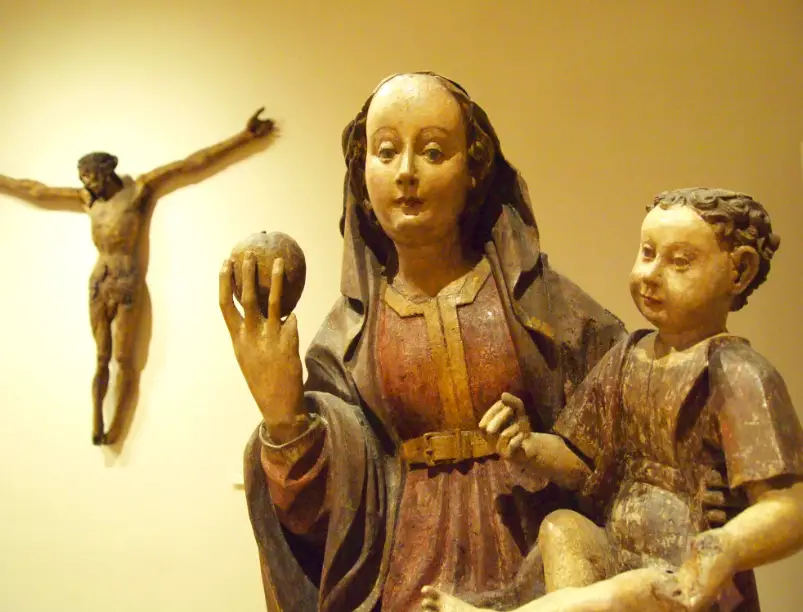
The city has everything from sacred art at the national Gallery..... (Photo: JL Flanner)
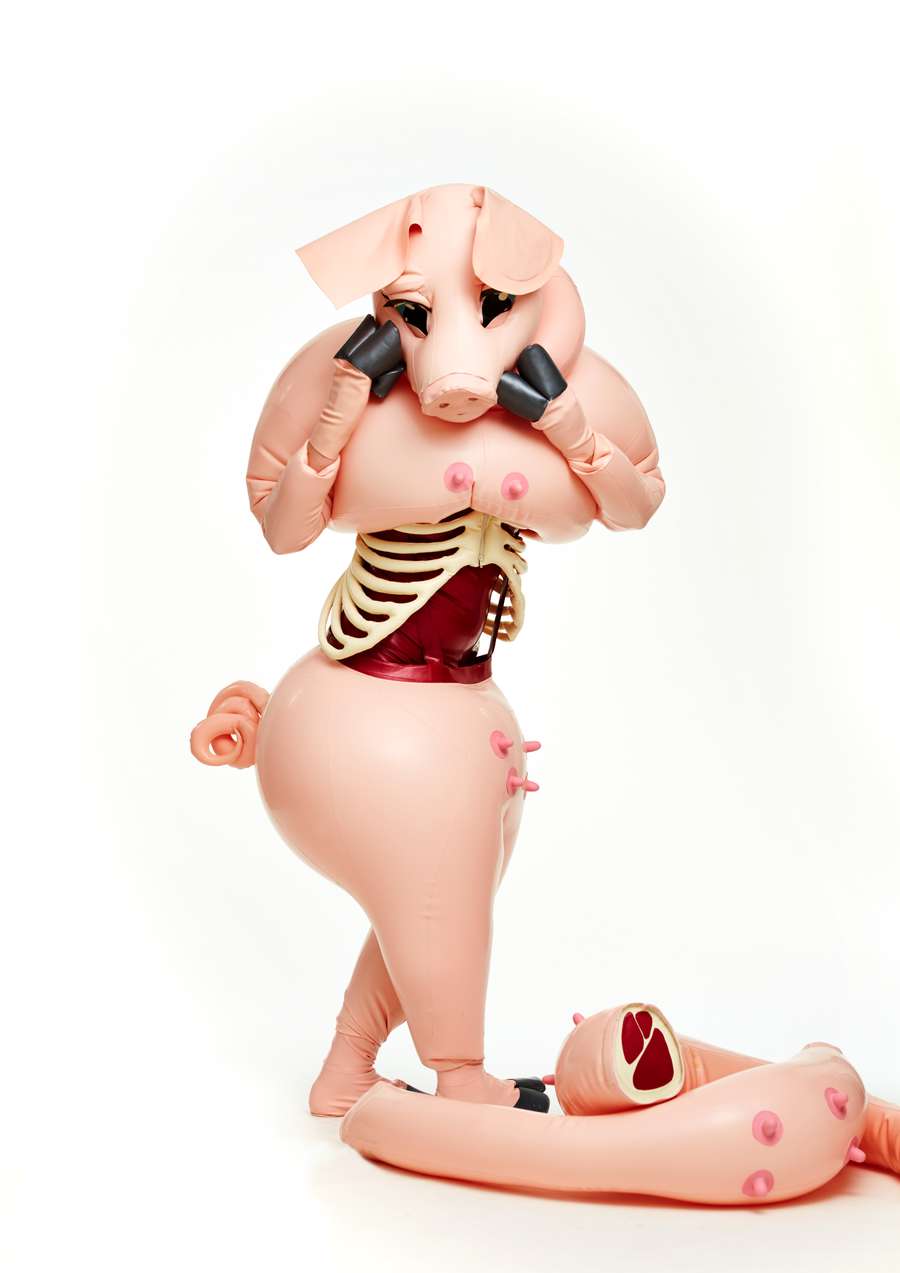
...to more colourful shows, like this from the Japanese artist Saeborg at Galerija vzigalica (photo from the gallery website)
If you prefer your art live then you’re also spoiled for choice in Ljubljana. Classical music, opera, ballet, pop, rock, electronic, jazz, folk and so on, as well as a vibrant street performance scene, mean you can easily take in a show from local or international names, with all the major venues in the heart of the city. When things reopen, we’ll start our regular what’s on in Ljubljana guides again, so you can plan your trip – here are all the previous editions if you want to see what’s usually in town.
How well do you know the city? Test your knowledge with 25 things to know about the green city of dragons…
Tours in Ljubljana
So that’s green, active, culinary and cultural– what else did Nina Kosin recommend? That would be the experiences you can have in Ljubljana. While most of these will be the ones you make yourself on the streets and in the buildings of the city – which is small and welcoming enough that you’ll feel at home by your second day – you can always go on a more organised endeavour and be more certain of the outcome. There are (usually) many tours on offer, with focuses on history, architecture, food, wine, beer, street art and more. The city itself promotes these tours, but there are many others available in a competitive market.
Here’s Martin, an official tour guide, filming himself giving a tour during lockdown
All of this, and a lot more, is waiting for you in Ljubljana when travel is possible again, and you’re looking for a clean, green and active place to escape from wherever you are now.
If you’re a tourist office and would like to a similar story for your area, please get in touch me with me at This email address is being protected from spambots. You need JavaScript enabled to view it., subject Virtual Tourism + PLACE NAME, and let me know why people should be planning a visit.
STA, 29 April 2020 - The Slovenian and Croatian ministers in charge of tourism, Zdravko Počivalšek and Gari Cappelli, met in Zagreb on Wednesday to discuss the possibilities for relaunching the sector in the face of the coronavirus pandemic. They agreed that a solution should at least be found for Slovenian owners of real estate in Croatia.
Počivalšek, the minister of economic development and technology, noted that around 110,000 real estate units in Croatia were owned by Slovenian citizens and that it would be appropriate if they were able to visit their holiday homes.
Slovenia is optimistic about the possibility that cross-border traffic with Croatia is at least partially re-established, at least by the late summer, if not earlier, under special medical protection conditions, he added.
The press release from the Croatian Ministry of Tourism also said that the Slovenian minister labelled Slovenia and Croatia as traditionally tourism-oriented and friendly countries, with both nations being good hosts.
Počivalšek later told the press that Slovenia and Croatia had a good epidemiological situation, which allowed the countries to think about gradually opening the tourism sector and borders, which would be implemented in two phases.
In the first phase, which would start by the end of May, Slovenian owners of real estate and boats in Croatia and vice-versa would be allowed to cross the border.
In the second phase, which is the most likely to start in the second half of June, travel by other tourists would also be allowed, the Slovenian minister said, adding that he and Cappelli would propose this to their respective governments.
Počivalšek said it was too early to speak about specific dates, as the opening of borders must be based on epidemiological criteria. A protocol for crossing the shared border and accommodation in tourist destinations needs to be laid down first, he added.
"The National Public Health Institute will contact next week the relevant Croatian centre so that the protocol is drafted, because it will not be possible to cross the border without it," the Slovenian minister said.
Cappelli meanwhile said as he met Počivalšek that Slovenians were among the most numerous tourists in Croatia, and the countries cooperate very well in tourism. Croatia last year recorded almost 1.6 million visits and just under 11 million overnight stays by Slovenians.
Cappelli added that the relevant bodies were already discussing the possibilities to open borders and on how to secure all needed measures and procedures so that Slovenian citizens could spend their summer holidays in Croatia.
Slovenian citizens who own real estate and movable property in Croatia are a special issue, he said, adding that a solution was being sought under which they would be able to visit their property while respecting all epidemiological measures.
Cappelli and Počivalšek assessed that such an agreement could serve as a case of good practice in the EU, with Croatia as the current EU presiding country having already launched an initiative for a similar solution to be implemented at the EU level.
The ministers also stressed the need to improve the state of tourism, especially in the light of the availability of funds for the sector in the future financial frameworks of the EU.
They also discussed the current state and options for maintaining the stability of tourism companies and jobs in the sector.
It was agreed that both national tourism organisations should prepare for the coming period together. "So that we jointly promote this party of Europe in remote markets when airline transport gets revitalised," Počivalšek said.
The Slovenian Tourist Board recently predicted a 60-70% fall in related business for 2020, and with no word yet on when cafés, restaurants, spas and hotels will be reopening there’s a profound sense of gloom within the travel, tourism and hospitality sector, even as the days get longer and warmer.
But things will eventually recover, or evolve, and one focus for the rebirth of tourism in Slovenia is the fact that in 2021 the country will take its place as a European Region of Gastronomy. The culmination of many years’ efforts, and a key achievement of the 2017–2021 Strategy for the Sustainable Growth of Slovenian Tourism project (PDF), which aims to expand the areas people travel to, and the range of activities they try.
To prepare the ground for 2021 the Slovenian Tourist Board has been publishing a series of brochures and books, the latest of which is an 84-page guide to the country in its emerging role as culinary destination. It’s a beautifully photographed and well-designed guide to Slovenian gastronomy, as broken down into four broad regions: Alpine, Mediterranean & Karst, Ljubljana & Central, and Thermal Pannonian.
It not only presents an overview of the variety of food and drink on offer in each of these areas – themselves encompassing 24 gastronomic regions – but also gives details of the best chefs, restaurants and inns, culinary events, souvenirs you can eat and drink, and so on. The free pdf is available here in English, German, Italian, French and Slovenian, with the latter making the publication an ideal dual text if you want some colourful learning material going over all the terms you’ll need to talk about food and drink in Slovenia and beyond.
If you’d like to go a little deeper into Slovenian cuisine, then the Tourist Board has also produced this pdf guide to all 24 of the country’s gastronomic regions, with more great photos and descriptions of the many dishes and delicacies you can find in this small nation. Note that there are, however, no recipes, for which your best bet is probably the Cook Eat Slovenia cookbook, or even our own list of recipes. Wine lovers are also directed to another more extensive guide from the Tourist Board, which goes into far more depth with regard to the country’s wine-growing areas, with a focus on Slovenia’s wine roads.
STA, 14 April 2020 - Tourism is among the industries hit particularly hard by coronavirus. Slovenia is in a precarious position. Not only is it next door to one of the main coronavirus hotspots in Europe, it also relies on foreign guests for three-quarters of arrivals. The Slovenian Tourist Board expects the sector to experience a 60-70% contraction this year.
Previous economic crises have been brutal on tourism, but the sector has been able to recover fairly quickly. The coronavirus pandemic is different.
"The virus has spread to all continents, it is present in all countries in Europe. The impact of the crisis on life, the economy, jobs and in particular tourism is more intensive than in previous crises," Slovenian Tourist Board (STO) director Maja Pak told the STA.
While the situation remains uncertain and it is difficult to gauge the impact of the pandemic on tourism, the Organisation for Economic Cooperation and Development estimated at the end of March that international travel would decline by 45% in the event strict lockdown measures last until June. If the recovery is pushed forward to autumn, the decline will be 70%.
The STO estimate is even more pessimistic: Pak expects a 60-70% contraction in demand if the relaxation of lockdown measures starts in June, if not, the figure is likely to be higher.
Maja Uran Maravić, an associate professor at the Faculty of Tourism Studies in Portorož, agrees with the estimate given the estimated 30% contraction in the first quarter compared to a year ago.
"The decline will probably be around 70% assuming hotels start opening at least by 1 June," she said.
After the sharp decline, the recovery is expected to be long. Pak expects it will take several years, depending on how successfully the virus is contained, when borders reopen, and when tourism providers are allowed to operate again.
A lot will also hinge on how successfully the tourism industry adapts to the "altered consumer behaviour and the new situation post-crisis", according to Pak.
"Distance, which will be the new standard for a long time, will affect revenue and slow the recovery."
Slovenia recorded 6.2 million tourist arrivals and 15.8 million nights last year. According to Tanja Mihalič, a Ljubljana School of Business and Economics professor who specialises in tourism, it may take until 2023 or 2024 before Slovenia returns to these levels.
It may take even longer before revenue from foreign guests returns to the level recorded last year, according to Mihalič, who noted that the situation might even escalate into a price war.
On the upside, Slovenia is relatively well accessible by car from the countries from which the majority of foreign guests come, and its seaside might benefit from the misfortune of major seaside destinations such as Italy or Spain.
Regardless of the pace of recovery, tourism is likely to be different than it was before the crisis, requiring far-reaching adjustments by players in the industry.
As Mihalič noted, the trends included smaller groups, a focus on hygiene, and greater demand for tourism products that involve less interaction between people. "Companies with automated receptions and services and card access to facilities and services will have an advantage," she said.
Pak highlighted Slovenia's established position on the market for green tourism and niche products, which she said was a great asset going into the recovery phase.
The STO is also counting on domestic guests, who accounted for roughly a quarter of all guests last year, with Pak noting than after past crises Slovenians tended to value the safety of spending holidays in their country. Moreover, it will take a while before global travel returns to pre-corona crisis levels.
However, Maravić says that there are simply too few domestic guests to offset the decline in foreign visitors. "But if even domestic guests do not show up, our tourism will be ravaged if the borders stay shut."
All our stories on coronavirus and Slovenia are here
STA, 5 March 2020 - Several Slovenian travel agencies have seen a significant drop in business because of the new coronavirus. The agencies organising tourist trips in Slovenia are particularly affected, while those offering trips abroad are noticing a change of tourism flows.
The Ljubljana-based Atur Travel, which targets mainly tourists from Asia with its trips to south, eastern and central Europe, has recorded a major drop in the number of guests.
Almost all trips in March have been cancelled, as have 80% of those scheduled for April and May, CEO Anja Poženel Belec said, adding that most trips were being cancelled by their clients from Thailand, Indonesia, Vietnam and South Korea.
"At the moment, bookings are being pushed to September and October, so we are expecting a big increase in autumn if the situation calms down until then. But the shortfall in the first six months will nevertheless show at the annual level."
Gorazd Skrt of Lovely Trips, which helps companies promote Slovenian tourism in Italy, says that Italian travel agencies are seeing a significant drop in bookings.
Many people who do not have symptoms are cancelling their trips so as to avoid transmission, while in Slovenia, people fear guests from Italy will bring the virus, he said.
The impact of the epidemic on tourism is difficult to assess at the moment, according to him. "If the situation improves in the coming weeks, we'll be able to make up for a part of cancellations and only record a drop of a few percent. But if the situation continues for months, arrivals of Italian guests could be magnitudes worse."
Plans for the Easter and 1 May holidays are also being affected. "We are recording cancellations of existing reservations. Those who have not made reservations yet, are afraid to make them," he said.
The problem is that even if the epidemic is stopped by then, there will not be enough time to organise group trips, Skrt explained.
"Tourism is an industry that is quickly affected by crises but also recovers quickly. At this point, two scenarios are possible - under the less negative one we'll be trying to offset the negative effects until the end of the year, while in the worst case scenario the season will be ruined."
Big travel agencies offering trips to other countries are not particularly affected. Palma has not seen a drop in demand or any major cancellations.
Kompas said the situation was changing on a day-to-day basis. Its tours of Italy do not make stops in the towns that are quarantined at the moment, so there have been no cancellations.
Rather than a drop in demand, they are noticing that people are opting for slightly different destinations.
GoOpti, a company providing shared and private transfers to airports and between towns, is seeing a 30-40% drop in the number of passengers, especially in Italy.
In the face of the negative effects of the virus on business, several associations, including the trade union of employees in the hospitality sector from the ZSSS trade union confederation, the Employers' Association and the Chamber of Commerce and Industry (GZS), have called on the government to introduce measure to mitigate the effects of the coronavirus immediately.
They called for subsidies for shorter working time and financial aid for companies that have no financial reserves to fall back on.
The GZS said today that problems were expected to mount, so the government should follow the recommendations of the Organisation for Economic Co-operation and Development (OECD).
The OECD said on Monday flexible forms of work should be introduced to preserve jobs, while governments should adopt temporarily tax and budget measures to mitigate the effects of the virus in the most affected industries such as tourism, the automotive sector and electronics.
All out stories on coronavirus and Slovenia are here
SURS just released the full tourist figures for 2019, and although we already published a summary we thought we’d dig a little deeper into the data, to find some other trends and points of interest, with the top 10 nations for the year shown below (and the full list at the end of the story).
*Other Asian countries includes all Asian nations other than China, Japan and South Korea
When looking at the monthly data for all foreign tourists, the first thing to note is the extreme seasonality of such visits. The lowest figure, 167,689, was for February, while the highest, 879,291, was in August, with June to September all months with more than a half a million arrivals.
Of course, given the habit of summer vacations, and the fact that most visitors are from Europe, this isn’t surprising. But what about places with other traditions? The data for North East Asia – China, S Korea and Japan – shows a different picture, as does that for Other Asian countries (such as India, which isn’t yet pulled out of the data on its own) .
Related: Chinese Tourism Booming in Slovenia, Ex-Yugo Nations
Looking at China alone and there are two peaks, either side of the August one for tourism in general, with a very off-trend spike in October. It’s much the same story elsewhere in Asia, as seen below in a chart for China, South Korea, Japan and “Other Asia”. All have peaks outside the high summer, in late spring and – with the exception of Japan – in autumn, too.
Combining all the numbers in the chart above gives the following for the whole of Asia.
This line can then be overlaid on the one for the whole world, producing the following image.
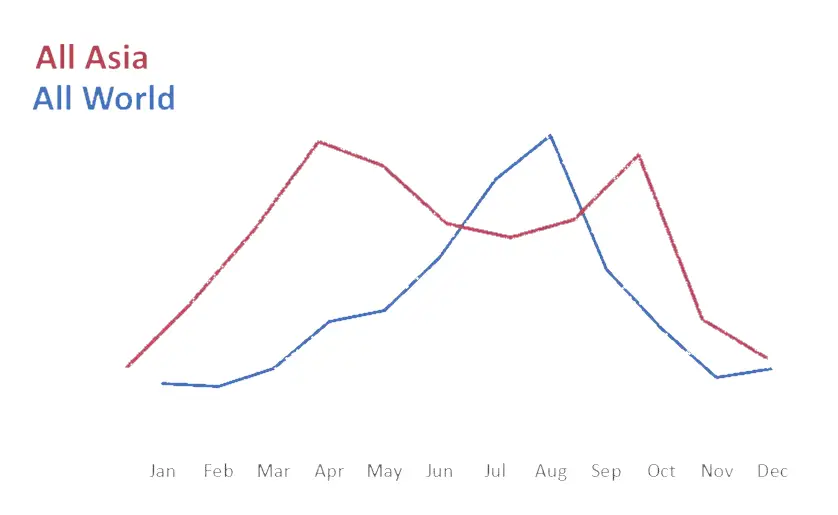
Finally, I took a look at the percentage of tourist arrivals from all of Asia by month, with it being 9.5% for the whole. There are two months where such tourists account for more than 15% of the total, in May (15.9%) and October (17.4%).
The data thus suggest that one way to reduce the seasonal nature of tourism in Slovenia, and the trade in related goods and services, would be to continue and extend efforts promote the country as a destination in Asia, as tourists from this region tend to avoid the peak summer months and arrive out of season. You can learn more and play around with the SURS data here.
The full list of nations and regions for which data on tourist arrivals in 2019 is available is shown below.
| Italy | 597,553 |
| Germany | 584,837 |
| Austria | 396,527 |
| Croatia | 235,020 |
| Hungary | 190,980 |
| Czechia | 189,829 |
| Netherlands | 186,721 |
| Other Asian countries | 176,454 |
| France | 166,870 |
| United Kingdom | 159,720 |
| United States | 148,751 |
| Serbia | 144,850 |
| Korea (Republic of) | 139,451 |
| Poland | 132,601 |
| Belgium | 113,871 |
| China | 98,975 |
| Spain | 88,138 |
| Switzerland | 78,696 |
| Bosnia and Herzegovina | 72,112 |
| Russian Federation | 69,868 |
| Slovakia | 64,758 |
| Israel | 59,615 |
| Romania | 57,095 |
| Australia | 53,732 |
| Ukraine | 44,114 |
| Bulgaria | 38,015 |
| Sweden | 36,864 |
| Canada | 35,069 |
| Japan | 33,918 |
| Turkey | 28,048 |
| Other countries of South and Middle America | 26,248 |
| Denmark | 25,881 |
| Other European countries | 25,732 |
| Finland | 25,538 |
| North Macedonia | 22,543 |
| Ireland | 21,358 |
| Brazil | 16,755 |
| Portugal | 16,283 |
| Norway | 14,438 |
| Montenegro | 13,307 |
| Greece | 12,374 |
| New Zealand | 10,009 |
| Other African countries | 8,927 |
| Lithuania | 8,178 |
| Malta | 6,899 |
| Latvia | 6,890 |
| Estonia | 5,406 |
| South Africa | 4,490 |
| Luxembourg | 3,941 |
| Iceland | 2,953 |
| Cyprus | 1,227 |
| Other countries of Oceania | 396 |
STA, 31 January 2020 - Some 6.2 million tourists visited Slovenia last year, a 5% increase compared to 2018. The number of overnight stays grew 0.6% to roughly 15.8 million, shows Statistics Office data released on Friday.
The number of Slovenian tourists increased by 1.3% to 1.5 million, while the number of foreign tourists grew by 6.3% to 4.7 million.
The bulk of the foreign tourists came from Italy, Germany and Austria, but while Austrians opted more often for holidays in Slovenia (up 10.7%), Italians were less likely to visit the country (down 8.5%).
Meanwhile, the number of tourists in December 2019 was on par with the year before. On the other hand, the number of overnight stays decreased by almost 9%.
The Christmas holiday season attracted foreign tourists mostly from Italy (26% of the foreign tourists), Austria (11%), Croatia (10%), Germany (6%) and Serbia (5%). Spas, the Slovenian Alps, the capital and the seaside were top destinations at the end of 2019.
Related: Where Did the Visitors to Slovenia Come from in August 2019?


